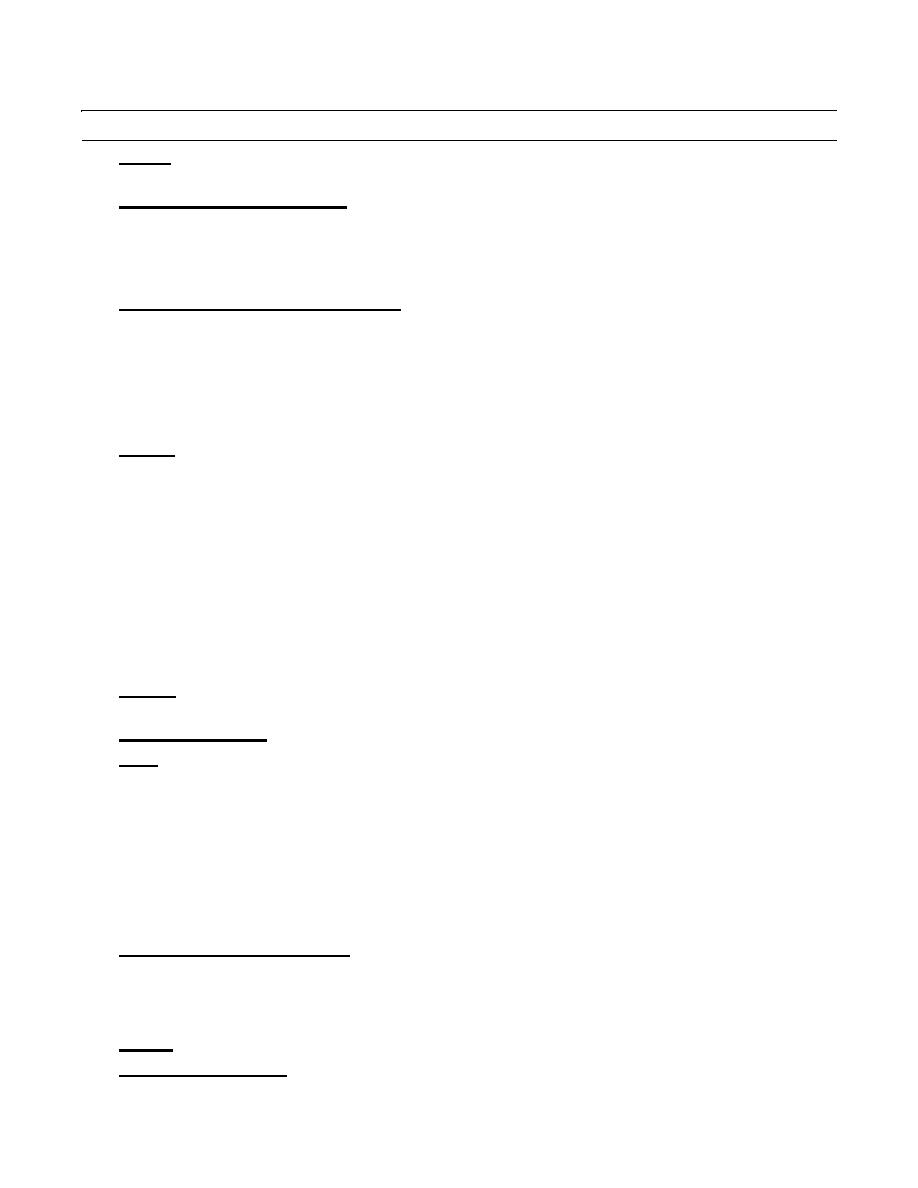 |
|||
|
|
|||
|
|
|||
| ||||||||||
|
|
 TM 10-3930-660-24-2
INSPECTION INSTRUCTIONS
General. All components and parts must be carefully checked to determine if they are serviceable for reuse, if they can
1.
be repaired, or if they must be scrapped.
2.
Drilled and tapped (threaded) holes.
a.
Inspect for wear, distortion (stretching), cracks or any other damage in or around holes.
b.
Inspect threaded areas for wear, distortion or evidence of cross-threading.
c.
Mark all damaged areas for repair or replacement.
3.
Metal lines, flexible lines (hoses) and fittings.
a.
Inspect lines for sharp kinks, cracks, bends or dents.
b.
Inspect flexible lines for fraying, evidence of leakage or loose fittings or connectors.
c.
Check all fittings and connectors for thread damage. Check for hex heads that are worn or rounded by poorly fit-
ting wrenches.
d.
Mark all damaged material for repair or replacement.
4.
Castings.
a.
Inspect all ferrous and nonferrous castings for cracks using a magnifying glass and strong light.
b.
Refer to MIL-I-6866, Inspection, Liquid Penetrant Methods, and MIL-I-6868, Inspection Process, Magnetic Parti-
cles.
c.
Particularly check areas around studs, pipe plugs, threaded inserts and sharp corners. Replace all cracked castings.
d.
Inspect machine surfaces for nicks, burrs, or raised metal. Mark damaged areas for repair or replacement.
e.
Inspect all pipe plugs, pipe plug openings, screws and screw openings for damaged or stripped threads.
f.
Check all gasket mating surfaces, flanges on housings, and supports for warpage with a straightedge or surface
plate. Inspect mating flanges for discolorations that may indicate persistent oil leakage.
g.
Check all castings for conformance to applicable repair standards.
Bearings. Refer to TM 9-214 for inspection of bearings. Check all bearings for conformance to applicable repair stan-
5.
dards.
Studs, bolts and screws. Replace if threads are damaged, bent, loose or stretched.
6.
7.
NOTE
When gear teeth wear limits are not established, good judgment is required to determine if gear replacement
is necessary.
a.
Inspect all gears for cracks using a magnifying glass and strong light. No cracks are permissible.
b.
Inspect gear teeth for wear, sharp fins, burrs and galled or pitted surfaces.
c.
Check keyway slots for wear or damage.
8.
Bushings and bushing type bearings.
a.
Check all bushings and bushing type bearings for secure fit, evidence of overheating, wear, burrs, nicks and out-of-
round condition. Replace as necessary.
b.
Check for dirt in lubrication holes or grooves. Holes and grooves must be clean and free from damage.
Oil seals. Oil seals are mandatory replacement items.
9.
Core hole expansion plugs. Inspect for leakage. Replace plugs when leakage is present.
10.
|
|
Privacy Statement - Press Release - Copyright Information. - Contact Us |